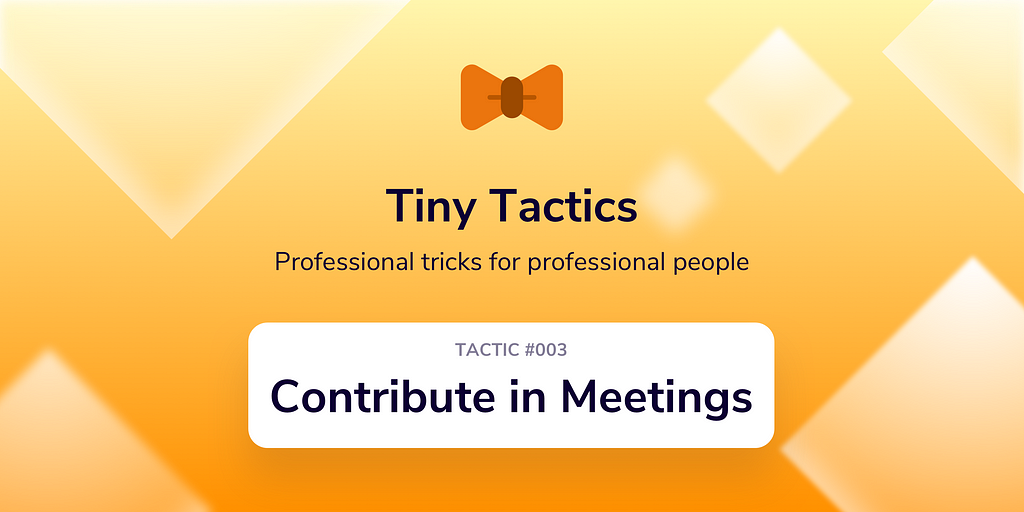Build Design Systems With Penpot Components
Penpot's new component system for building scalable design systems, emphasizing designer-developer collaboration.

UX Power Tools – Medium | Christian Beck 
When you’re just starting out in design, you really don’t know much about anything. Of course…you leave grad school thinking the opposite:
I’m the greatest designer the industry will ever see, and I will WOW my co-workers with my awesome insight.
But a few months into your new job, you get blindsided with just how much you don’t know. All the learnings you brought from school (or a previous role) get tested by a new product, new team dynamics, and possibly a new industry or business model. This can lead to thought paralysis and an outright fear of speaking up at all. But someone decided to pay you to do something, so you need to find a way to contribute.
In your first few years as a designer, you make connections hours or days later than your more experienced colleagues. You may be in a complex domain, a product that has a lot of history or simply working with experts. Whatever the case, you’re drowning in a new context that challenges your brain to keep up.
After a few years, you start catching up and making connections alongside others. Those conversations that left you hopelessly lost years before are now making sense. And as a result, you’re actually able to add your own thoughts.
The last stage, of course, is mastery — when you start making connections before your peers (then start some unicorn tech company to change the world).
This article is all about that first stage because it’s hard to meaningfully contribute when feel so far behind your peers. And look, when you get to be experienced, it’s easy to contribute in a meeting. You can just start rambling about your experience and talk over people at will.
Jk…
Or am I? (but seriously, don’t do that)
Anyway, let’s look at some common cases you’ll find yourself hesitant to speak up, and dead-simple tactics for staying engaged and useful in meetings when you’re in over your head.

 Jon Moore demonstrating what NOT to do (left), and proper meeting etiquette (right).
Jon Moore demonstrating what NOT to do (left), and proper meeting etiquette (right).
I couldn’t go one week without feeling like this for the first ten years of my career (now it’s up to 2x a week). What I’ve learned looking back, is that people don’t care if you ask questions as long as you listen to the answer. What people really don’t like is when you don’t ask questions and just interpret what they’re saying without asking for clarification.
The point is, you risk much more by sounding dumb than by sounding smart. And chances are, if you feel lost, so does someone else.
This is by far the most common obstacle I hear — from junior and senior designers alike. And now that I’ve hit my mid-30’s and have hired designers in their early 20’s, I can honestly report that senior people do not care how old you are. If you have something to say, then say it. Just like the above point, I am more annoyed if someone doesn’t speak up than if they say something that I disagree with. There will always be insecure jerks, but for the most part, age gets left at the door in design. Personally, if I wasn’t comfortable with younger designers proving me wrong, I wouldn’t hire them.
Yep, this will happen. But then again, you may have ideas you think are great, that end up being terrible after you bring them up. Even the best designers can rattle of dozens of bad ideas. Rather than thinking of your ideas as solutions, simply think of them as sparks. You bring up ideas, good and bad, not to solve problems but to get others engaged to build off of. Bad ideas can lead to just as innovative solutions as the good ones.
It’s hard to think of thoughtful questions in the moment. So stack the deck in your favor and think of some ahead of time. During the meeting, you’ll likely create even better questions because you started early. Remember: when you’re junior, you don’t make connections as fast, so anything you can do to help you make them faster will help immensely during a meeting.
Yes, people make fun of this as a way to sound smart. But this is actually good for you as well. For one, it gives you an easy way to engage in the meeting. But more importantly, it helps make sure you understand what’s going on. In fact, it’s not unlikely that another person in the room has the same question. Now you’re a fearless leader!
Maybe your self-confidence isn’t quite there and you’re not ready to take the leap to speak up in meetings. Or maybe the meeting ended before you could organize your thoughts to share. Don’t feel as if the meeting is your only opportunity. If you have questions or ideas, bring them up after the meeting. Email, a separate meeting, lunch…whatever it takes, just make sure your opinions and insights get heard.
If a lead, manager, or a VP (you lucky dog, you) is leading a meeting, than ask her what you can bring ahead of time. Maybe there’s a part of their presentation or agenda to which you can contribute. I could always use help with presentations as a design lead and would pass out from excitement if a designer asked what they could help me with.
So even if you don’t end up speaking during the meeting, you will have contributed — and gained some respect along the way.
When I’m not telling you how to speak, I’m working on Sketch design tools at UX Power Tools to make you a better, more efficient designer.
Follow UX Power Tools on Twitter
How to Contribute in Meetings was originally published in UX Power Tools on Medium, where people are continuing the conversation by highlighting and responding to this story.
AI-driven updates, curated by humans and hand-edited for the Prototypr community